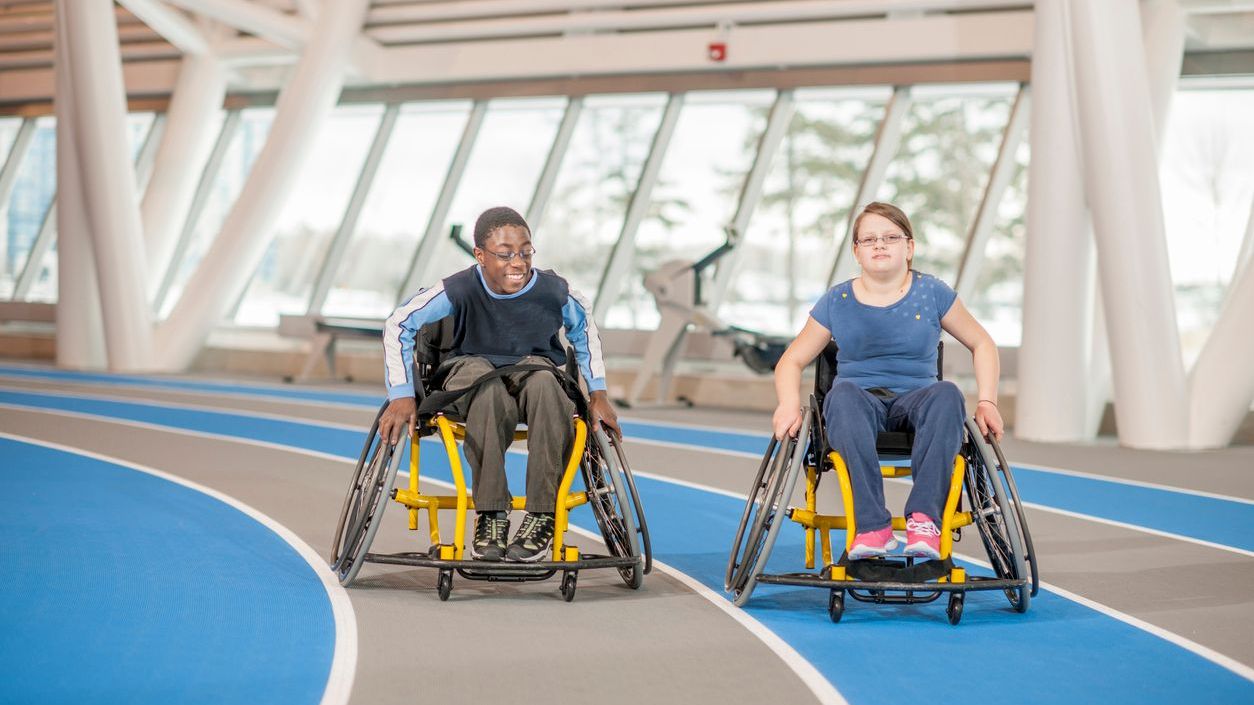What to know
- Adolescents and teens with spina bifida may have different needs that can be supported through the assistance of professionals in physical and mental health.
- As adolescents and teens with spina bifida grow, they will start taking active steps toward independence and perform more and more activities themselves.

Encouraging independence
Many physical, mental, emotional, and social changes are associated with the adolescent and teen years. Teens and adolescents develop their own personalities and interests and want to become more independent.
This transition period can be challenging, especially for people affected by spina bifida. Caregivers of adolescents and teens with spina bifida should take active steps toward encouraging independence starting in childhood. In this way, by the time they are older they can develop the necessary skills to reach their full potential.
As people with spina bifida mature, they will perform more and more activities themselves. Most teens will dress and bathe themselves, manage their bathroom plans, and move about independently in their homes and communities. They might begin to make their own doctor appointments. They will continue to participate in updating their own Individualized Education Plan (IEP) or 504 Plan, if they have one.
Finding support
Looking to the future
Teens with spina bifida and their families should begin planning for life after high school. This includes:
- Looking for doctors that treat adults with spina bifida.
- Deciding where the person with spina bifida will live.
- Choosing work.
- Exploring college or vocational school opportunities.
- Volunteering in the community.
- Having healthy relationships.
Planning early can help make the years ahead easier.
Prepare for the transition from pediatric to adult health care
Health effects
Mobility
People with a higher level of spina bifida (near the head) might have paralyzed legs and use wheelchairs. Those with a lower level of spina bifida might have more use of their legs and use crutches, braces, or walkers. They also might be able to walk without these devices. A physical therapist can work with adolescents and teens to teach them how to exercise their legs to increase strength, flexibility, and movement.
Sexual health
Spina bifida causes nerve damage that can affect sexual functioning. Most people with spina bifida are fertile and can have children.
Mental health and well-being
Overall mental health and well-being are very important for everyone. Mental health is how people think, feel, and act as they cope with life. To be at their best, people need to feel good about their lives and value themselves.
Teens and adolescents with spina bifida might feel isolated from others or have low self-esteem. This can cause them to become depressed. There are different ways to treat depression. Exercise can be effective. Counseling or medication also might be needed. Participating in peer support groups can also help.
Guidelines
Physical activity
Regular physical activity is important for all adolescents, but especially for those with conditions that affect movement, such as spina bifida. CDC recommends 60 minutes of physical activity a day. There are many ways for teens and adolescents with spina bifida to be active. For example, they can:
- Engage in physical activities with friends.
- Roll or walk in the neighborhood.
- Lift weights.
- Participate in sports for people with and without disabilities.
- Attend accessible summer camps and recreational facilities.
For more information, please visit the following website:
Wheelchair evaluation
Teens and adolescents with spina bifida should participate in a seating or wheelchair evaluation at least once each year if they use a wheelchair. This evaluation will make sure the wheelchair fits correctly and makes moving as easy as possible.
Sexual health
Caregivers can encourage adolescents with spina bifida to talk with their healthcare professional about sexuality, sexual functioning, contraceptives, and reproductive concerns.
Folic acid
Folic acid is very important. Taking enough folic acid before and during pregnancy can help prevent major birth defects of the brain and spine―including spina bifida. If planning to get pregnant, a person with spina bifida should consider getting a prescription for 4,000 micrographs (mcg) of folic acid. This should be taken one month before pregnancy and during early pregnancy.
For more information, please visit these webpages from the Spina Bifida Association:
Mental health
Everyone feels worried, anxious, sad, or stressed sometimes. If these feelings don't go away and interfere with daily life, young adults should talk with other people about their feelings. This can include a family member, school counselor, or healthcare professional. Depression and other mental health concerns can be treated.
If you have questions about mental health or getting mental health services, speak with your doctor or licensed mental health professional. A nearby health facility or your state mental health agency also may be able to help.
What you can do
Safety
Safety is important for adolescents and teens with spina bifida. They can be at higher risk for injuries and abuse. It is important to learn how to stay safe and what to do if they feel threatened or have been hurt.
Getting around
Being safely mobile in their homes and communities will help adolescents and teens become more independent. To do this, they will need to find and use safe transportation.
Many teens with spina bifida have issues that can affect safe driving. A driver rehabilitation evaluation specialist can identify these issues and whether modifications to the car would make it more accessible.
Parents and caregivers can also help teens learn to safely use buses, cabs, and ride-hailing services.
- Sandler, Adrian, M.D.(2004). Living with Spina Bifida: A Guide for Families and Professionals. University of North Carolina Press: Chapel Hill.
- Spina Bifida Association. Guidelines for the Care of People with Spina Bifida. 2018. http://www.spinabifidaassociation.org/guidelines/
- The Association for Driver Rehabilitation Specialists. Driving and Spina Bifida.
